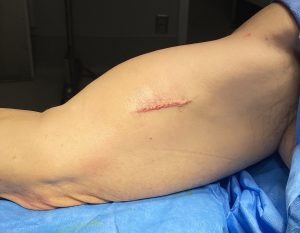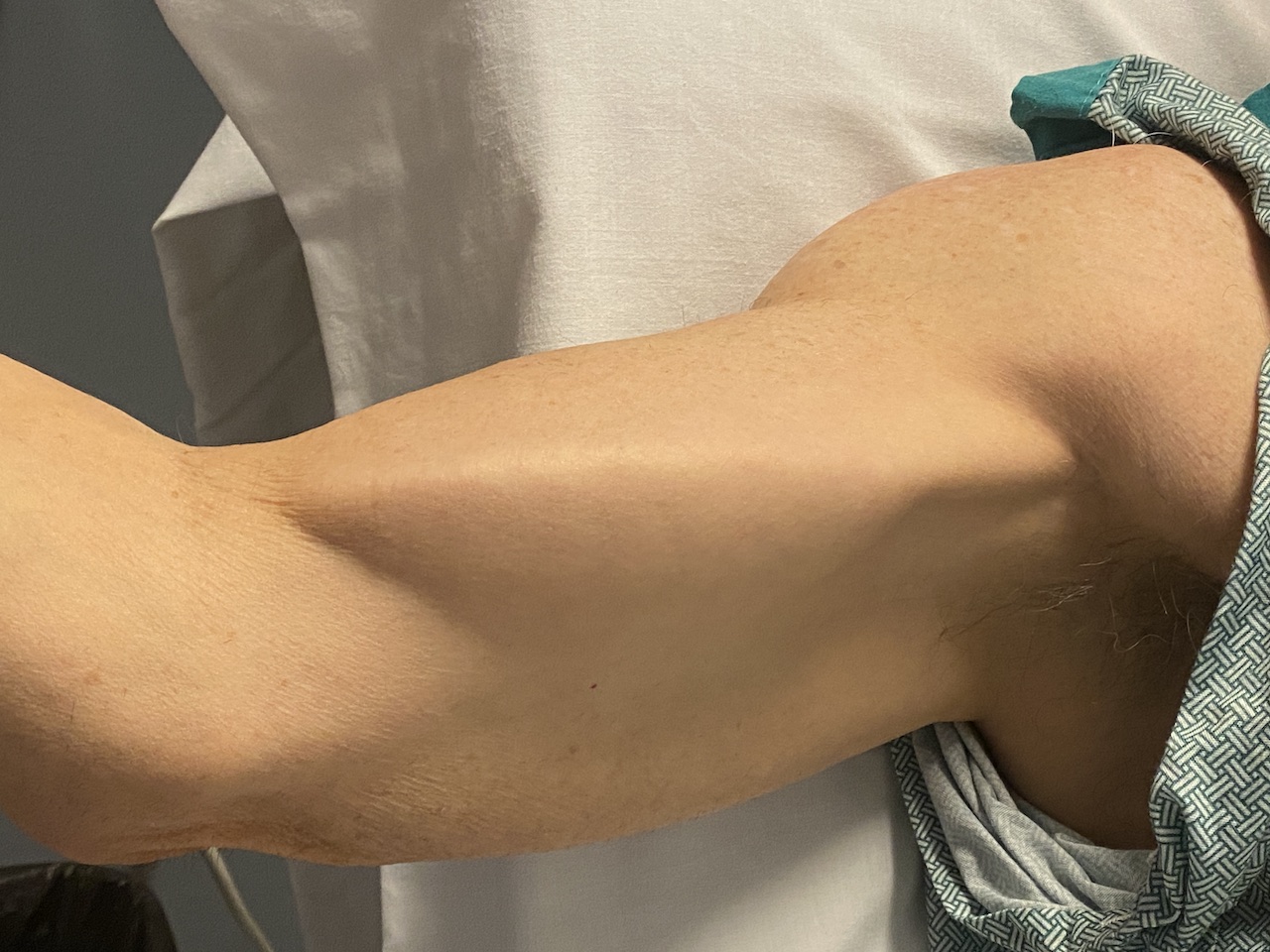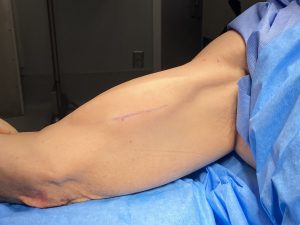Background: Bicep implants are the primary method of aesthetic muscle augmentation of the arms. While there are tricep and forearm implants as well they are not done as frequently as that of the bicep muscle. There are different locations for the bicep implant placement and the incisional access to do so. Each has their own advantages and disadvantages and there is no one universally accepted method of doing so.
There are three potential pocket locations for the bicep implant, subfascial (on top of the muscle), submuscular (under the muscle/on top of the bone), and intramuscular. (inside the muscle) Other or under the muscle are the primary pocket locations. The subfascial pocket is easier to access and dissect from an axillary incision. But it has a higher risk of implant show, asymmetry and shifting long term due to the thin facial cover. Conversely the submuscular pocket location fares better long term due to the thick muscular and tight muscular cover. It is a hard pocket, however, to dissect into and can be done by either the axillary or medial arm incision. There is also the musculocutaneous nerve in the muscle belly that must be avoided during the dissection.
The intramuscular location for the bicep implant is, most likely, an inadvertent pocket location. It can occur when a submuscular approach is being attempted and rather than getting completely under the muscle some muscle fibers remain over the bone. One would think that the intramuscular pocket would have all of the same benefits as that of the intramuscular pocket…but that may not be so.



Case Highlights:
1) The most ideal bicep implant pocket location is submuscular to avoid long term implant shifting or implant show.
2) Inadvertent intramuscular bicep implants can develop medial malposition and implant shifting
3) The direct medial arm incision is the only effective approach to repositioning intra- or submuscular bicep implant malpositioning.
Dr. Barry Eppley
World-Renowned Plastic Surgeon




